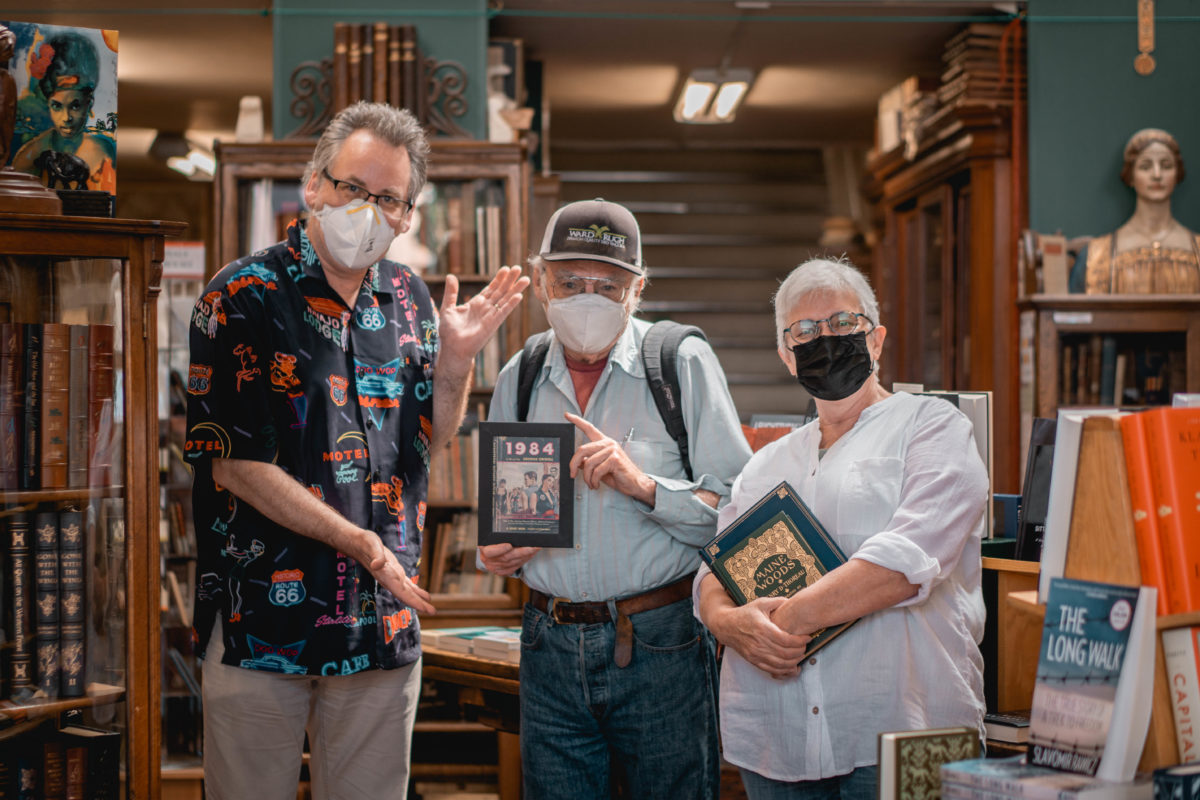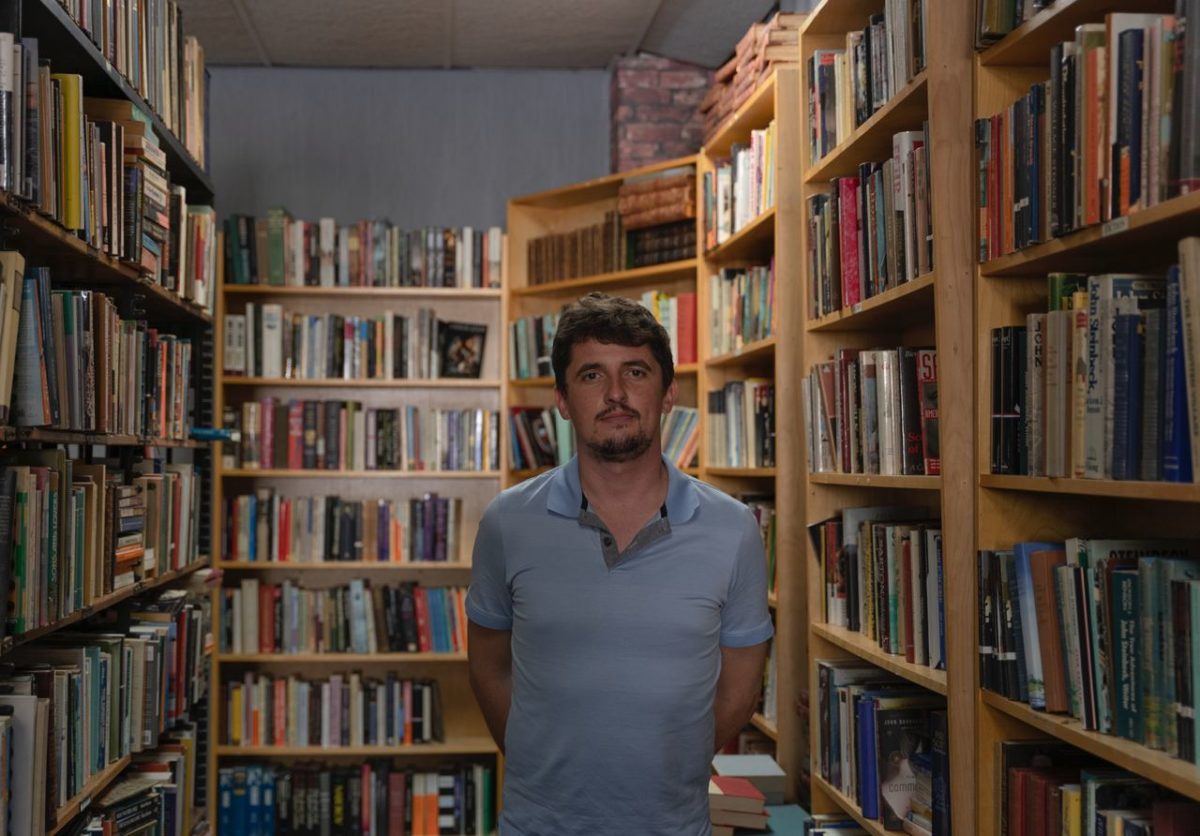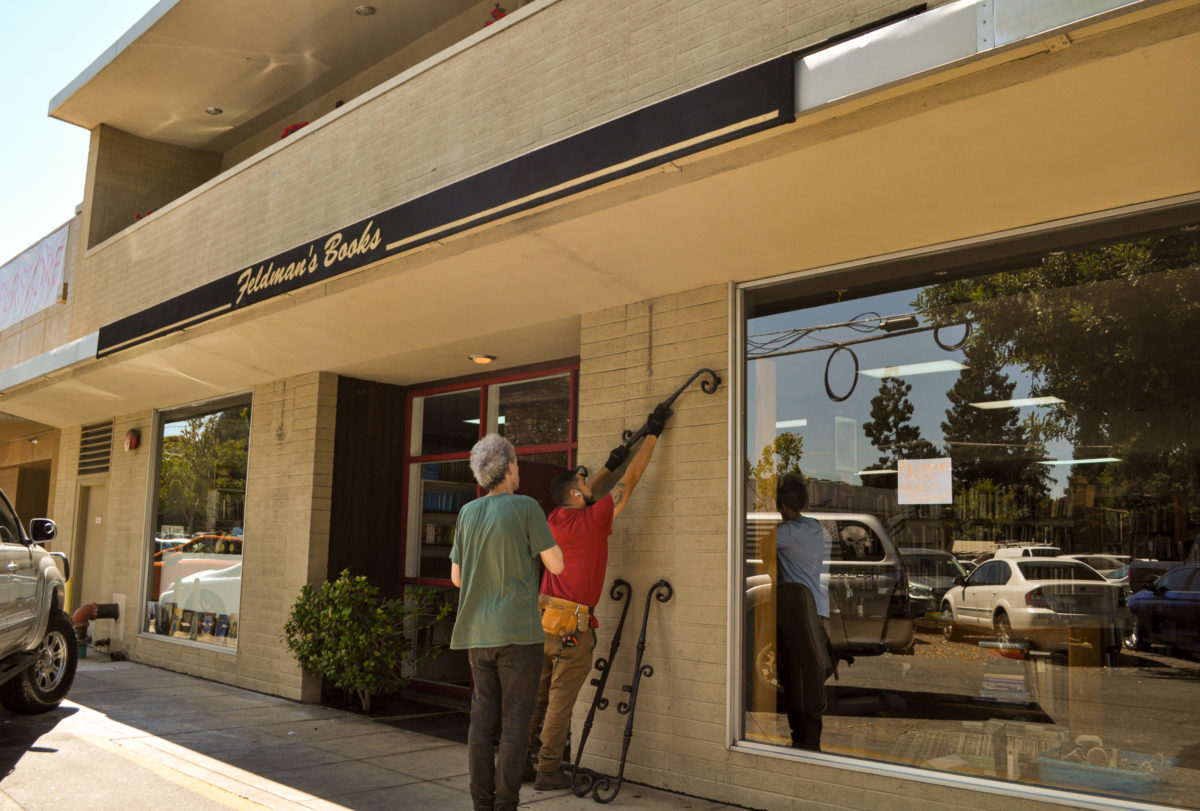One day, mid-pandemic, Feldman’s Books owner Jack Feldman and his apprentice Aidan Stone were greeted by an unexpected visitor: a hummingbird.
“She was freaking out — we couldn’t get her out of the shop,” Stone said. “She actually landed on top of the bird section, which was funny, and she flew behind one of the shelves where there was a window — so she wasn’t flying out.”
A bird is just a bird, but for us bibliophiles (and, apparently, most people this past year and a half), it’s easy to read the trapped hummingbird as some poignant representation of our own lives in quarantine. We see a flurry of frantic wings behind the glass, and we think of freedom so perfectly within sight and yet so utterly unattainable. Or we think, maybe it’s an embodiment of the spirit of the bookstore itself, alive and persevering despite restrictions. A sign of hope.
But if Stone did see some symbolism in the hummingbird, he didn’t let on — to him, the scene was just another one of many fond memories at the bookstore.
“Jack and I walked around outside of the building, and we looked through the window, and I could see the hummingbird perfectly framed behind the glass, flying around,” Stone said. “It was one of my favorite images I saw here.”
Feldman’s Books, founded by Feldman in 1996, is one of two independent rare and used bookstores in Palo Alto and Menlo Park. The other is Bell’s Books, founded in 1935 and located off of University Avenue. You only have to look through a few photos on Yelp to know that these two stores have been havens of local book lovers for decades. Rooms with eccentric ephemera, armchairs and tall shelves — filled to the brim with old hardcovers and yellowing paperbacks — offer refuge from the hustle and bustle of Silicon Valley life.
When the onset of COVID-19 forced businesses to shut their doors, Feldman’s and Bell’s both followed suit. For months, they could no longer offer to the public their spaces for browsing, reading and connecting over books with others.
“What was really hard and sort of sad was just not being with our people — we’re a really tight team, and we work really well together,” said Faith Bell, owner of Bell’s Books. “We enjoy each other’s company, and to just shut off seeing these people on a daily basis was hard.”

Other challenges followed. The year consisted of finding ways to keep their employees on full salaries and pay rent and utilities, as well as learning how to adjust quickly to ever-changing governmental mandates and new information about the virus.
“If you ever need a lesson with rolling with the punches, this is it,” Bell said. “At a time when people bringing their groceries home were sterilizing the outsides of their packaging, to have 350,000 books and not know, if I touch it and someone else touches it, if that’s a problem — that’s difficult.”
But as regulations relaxed after months of lockdown, the bookstores began to show signs of life. The staff at Bell’s and Feldman’s both took advantage of the momentary absence of customers to reorganize and deep clean their extensive collections, as well as to launch new online stores with some of their more interesting materials. At Bell’s, staff members introduced some levity into their workdays by adorning all their author busts and portraits with Post-It Note masks. And eventually, both stores were able to open, even if it was just a “table by the door” for curbside pickup at first.
“The thing that was really moving was to see how much the community wanted us there and missed us,” Bell said. “In lieu of browsing … we were delighted to find that people were really happy to have us pick [books] and bring things for them.”
According to Stone, “business has been better than ever,” with customers not only patronizing Feldman’s curbside pickup and new online store, but also making direct donations to keep the store afloat. Stone found that the pandemic reminded people of the importance of “third spaces”: places outside of home and work such as “church, your local coffee shop, or your gym or your bookstore — places you go to release.”

The past year hasn’t been without drama for Feldman’s Books. The bookstore relocated to a more central Menlo Park location in mid-August after a long, multi-year dispute with developers to preserve the original building. But Feldman and Stone are optimistic about their new location; new plans include bringing in a piano, painting the ceiling “Michelangelo style” and possibly even hosting a roller skating event on the store’s hardwood floors.
“It’s all been a great adventure and experience,” Feldman said. “The community has really come out and been supportive, and we found a good spot and … we persevered.”

Bell’s Books, after 70 years in the same location, isn’t going anywhere. This fact will be a relief for the store’s loyal patrons and general literary community, who have missed the musty smell and feel of their beloved used books. Bell described the “tentative faces” of people peeking through the doorway and entering the store on “their first trip out … after six months of being isolated” — people who had “trepidation but [who were] relieved to be someplace they felt safe that wasn’t just in their home.”
“You could sort of hear the sigh of relief to just touch books again, and some of them would stand and gaze and they would put their hands on the books,” Bell said. “It was almost like a religious experience to be back in a bookstore again. Some of them who normally would have put their stuff down next to the register to go on and browse some more, would just hug them. They’d just hold these books next to their chests.”

To Stone, the support for and eagerness to get back to local bookstores is a sign of a thriving literary community in Silicon Valley — one that does not disappear in the face of big tech, pandemics and relocations.
“For 25 years, Feldman’s Books was a beautiful place where people met and fell in love and read books that changed their lives, and that’s going to continue, and it’s going to be here,” Stone said. “I think that what it shows is that there is life and there is culture and there is community and ritual and nature here, and this is a place you can always come to remember those older and better parts of ourselves.”
Perhaps, then, Stone would allow me to grant one more superfluous meaning to his story of the trapped hummingbird: a soul who has found her way into the bookstore, and simply doesn’t want to leave.
